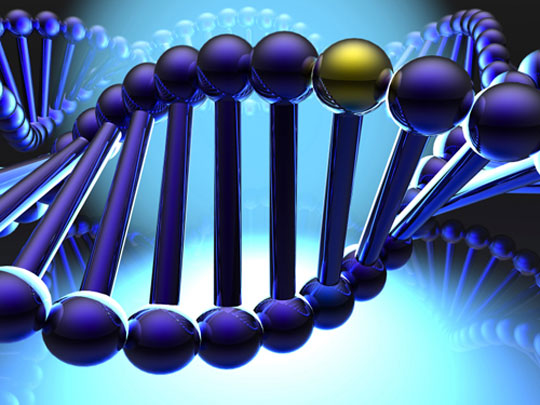Scientists have not yet grasped the number of genes needed to make humans, but only more human genes than chicken genes but less than tiny grapes.

Scientists are still diligently determining the number of human genomes. (Photo: genome.gov)
The exact number to create a human genome is still a secret to the scientific community, although experts have published a complete human gene map a decade ago. This is a project that identifies the sequence of base pairs that form DNA molecules, in other words deciphering the genetic makeup of humans. ' We are not only ignorant of the entire genome, but are also blind about their numbers ,' said University of Maryland professor Steven Salzberg at a genetic conference in Boston. Most guess there are about 25,000 genes in the human genome, more than chickens and less than grapes.
According to the latest calculation, the grape has 30,434 genes, while the chickens have 16,736 genes, although this number may increase when the study is completed. Like humans, the total number of genes of each species is not counted precisely because they are always changing. The most approximate human genome estimation result is the US National Institute of Medicine's RefSeq database, according to Professor Salzberg. With the calculation of RefSeq, humans have 22,333 genes. However, another US government database gives the number 38,621, while the result of the project named Gencode is 21,671.
The reason for such differences is because the gene consists of only about 1% of the 3 billion characters As, Ts, Gs, Cs make up the human genome. And genes don't stretch out like a single, continuous string. Instead, the human gene is found in protein fragments called exons , separated by fragments that do not carry useful information called introns . It is even more difficult when each exon in a gene contains only the part of a protein. The cells can mix and combine with various exon mixtures to make enough proteins.
Often scientists use computer programs to screen out billions of DNA characters and indicate the location of the gene. These programs have been improved over the years but have not yet been able to help experts identify exons in the intron forest, as well as show how these protein encodings join together, according to the biologist. Study Clara Amid Computing by Sanger Institute in the UK, which is responsible for the Gencode project. Currently Gencode group has not completed its research. And surely 21,671 human genes will still increase over time.
 Why do potatoes have eyes?
Why do potatoes have eyes? 'Tragedy' the world's largest carnivorous life: Death becomes ... public toilet
'Tragedy' the world's largest carnivorous life: Death becomes ... public toilet Tomatoes were once considered 'poisonous' for 200 years
Tomatoes were once considered 'poisonous' for 200 years Detecting microscopic parasites on human face
Detecting microscopic parasites on human face